#placentalia
Text

[ID: A photograph of a southern spotted skunk, looking out towards the camera from between a small gap. It has black fur covered in wiggly, thick white stripes, with a white spot in the middle of its face between its round black eyes. End ID.]
Observation by pavellperez on iNaturalist
alright this is killing me with how cute it was so I was obligated to share it with you all. Please look at this adorable little face. Oh my gods.
#skunks#spotted skunk#southern spotted skunk#photography#iNaturalist#Spilogale angustifrons#spilogale#spotted skunks#Mephitinae#Mephitidae#Carnivora#Laurasiatheria#Placentalia#Theria#Mammalia#Vertebrata#Chordata#Animalia#YES I AM GOING TO BE LISTING OUT ALLLLL THE TREES SO I CAN LEARN THEM :)#described images
279 notes
·
View notes
Text

Burchell's zebra (Equus quagga burchellii)
Photo by Simon Francis
#burchell's zebra#plains zebra#equus quagga burchellii#equus quagga#equus#equini#equinae#equidae#hippomorpha#perissodactyla#euungulata#laurasiatheria#placentalia#mammalia#tetrapoda#vertebrata#chordata
246 notes
·
View notes
Text
I know in my life the most annoying one is mammal bias, but I'm a bird researcher, and honestly, I want our insect family to rise up in a single cry of agony
372 notes
·
View notes
Text
8 notes
·
View notes
Photo
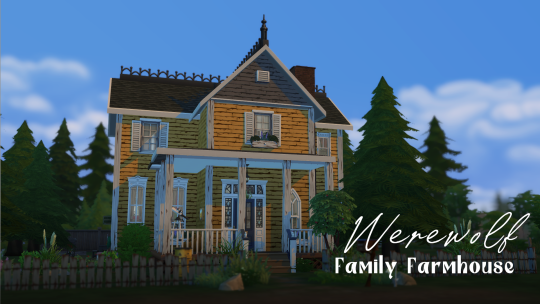



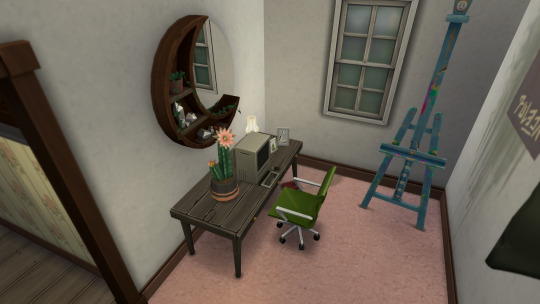
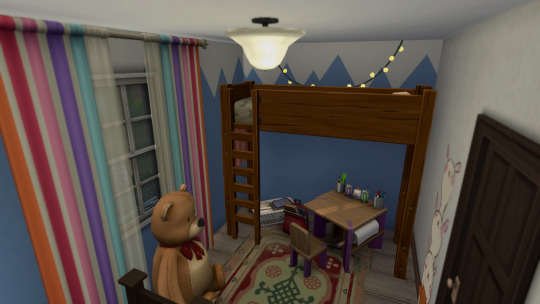
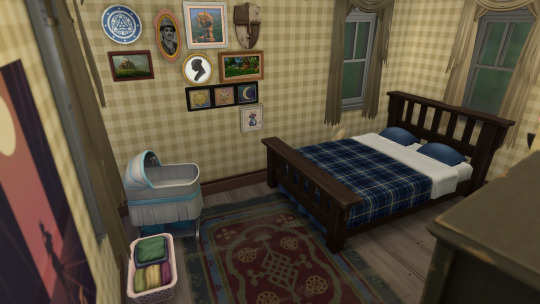


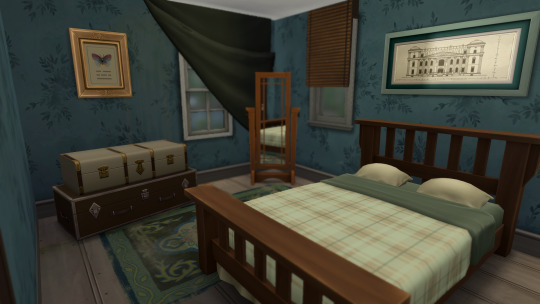
Werewolf Family Farmhouse - 4 bedrooms, 2 baths
30 x 20, built on the empty lot in Moonlight Mills
Sleeps up to 9 sims (3 full beds, 1 single bed, 1 toddler bed, 1 bassinet)
A traditional American farmhouse with some Victorian and Craftsman flourishes.
Plenty of activities for sims of all ages: gardening, telescope, computer, tv, guitar, laundry, and more!
~70k
Packs used: Basegame, Strangerville, Werewolves, Laundry Day, Paranormal Stuff, (+1 flooring from Spooky Stuff)
CC-free!
I had the urge to do a build with limited packs. It turned out cute, so I thought I’d share. No CC used, but it’s a big lot with a lot of stuff, so it may chug on less-powerful machines.
Gallery ID: @placentalia
DOWNLOAD (SFS)
11 notes
·
View notes
Text
Multituberculate Earth: Diets
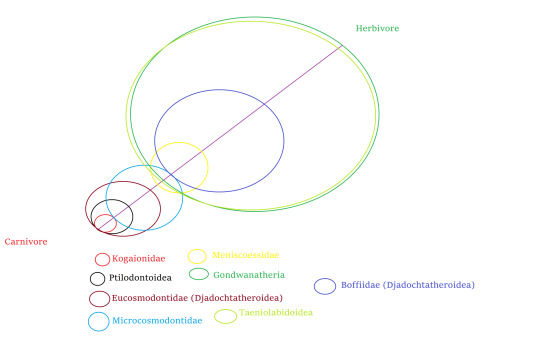
Multituberculates were a highly diverse group of mammals. Though stereotyped as rodent analogues, in actually their diversity included a large variety of herbivores, omnivores and even hyper-carnivores like cats and weasels (see studies linked above). That their sheer diversity constrained placental evolution in the early Paleocene further attests them as not mere rodent analogues but a highly diverse lineage in terms of ecology comparable to Placentalia as a whole.
Multituberculates have often been traditionally interpreted as primarily herbivorous as the only living mammals to have similar plagiaulacoid teeth (some living possums and primitive kangaroos) mostly use these teeth to crack open seeds. The same likely applied to some multituberculates, but the taxa with the largest plagiaulacoids are actually the more carnivory-oriented ones. In all honesty, the multituberculate plagiaulacoid likely also functioned as a carnassial blade, and in some ptilodontoideans like Ectypodus the upper premolars even form carnassial-like teeth! Damning still is evidence of multituberculates scavenging from choristoderes, dinosaurs and even other predatory mammals. That said, many lineages across the Late Cretaceous and Paleocene became herbivorous, though the fact that most of these lost the plagiaulacoid proves that it had little to no function in an herbivorous diet.
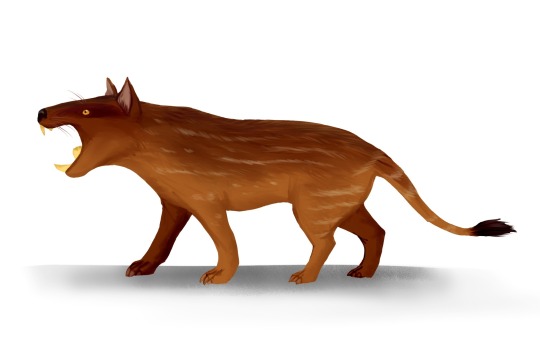
The most basal of the cimolodonts, kogaionids retained massive plagiaulacoids and accordingly were mostly insectivorous, branching off to macropredator ecologies in this timeline. The molars and upper premolars were rather simple, being mostly used to shear meat much like the carnassials of our carnivorans and the triconodont teeth of eutriconodonts and morganucodonts. The lower incisors are relatively long, allowing the animal to pierce prey, while the upper ones are smaller and allow for the removal of skin when occluding with the lower ones. No expansion into herbivorous niches has taken place in either timeline, even as they took to the air and the sea in this timeline.
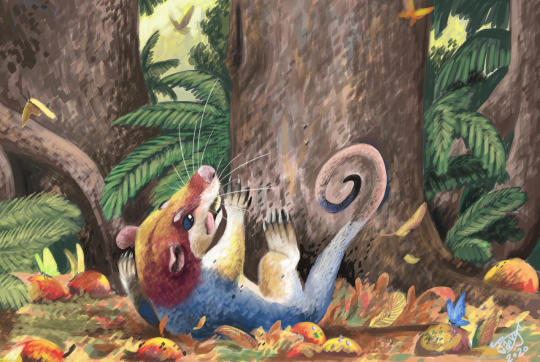
Ptilodontoideans are the most hypercarnivorous group in most studies (though these tend to leave out kogaionids), with Ectypodus and kin further specialising by developing carnassial-like upper premolars to help the plagiaulacoid to slice flesh. Their’s are the proportionally largest plagiaulacoids, thus reinforcing the idea that these teeth were used primarily in a carnivorous context. The lower incisors are long, allowing them to be used to pierce prey; in notoptilodontoideans, the vestigal plagiaulacoid in front of the main one has uniquely evolved into a canine-like tooth to fill this role instead, allowing the incisors to focus on grasping and removing skin. Still, many lineages are arboreal and in some at least facultative exploitation of seeds and fruits likely occurred. In this timeline one clade, the afroptilodontoideans, are more opportunistically herbivorous than other clades, even becoming the dominant mouse-like seed eaters in Africa and Madagascar due to the absence of eucosmodontids, but still shy away from actual folivory, likely due to the plagiaulacoid preventing large grinding molars.
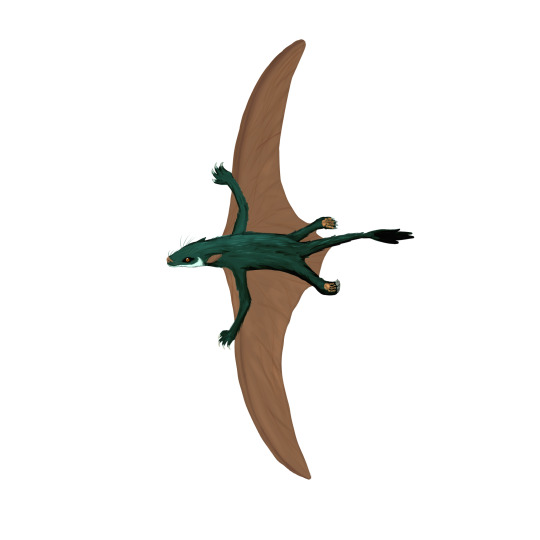
One of the two djadochtatheroidean lineages to make it to the Cenozoic, these mammals are similarly oriented towards carnivory, much like their Cretaceous relative Kryptobaatar. Their plagiaulacoids are about as long as those of ptilodontoideans, but they are less tall, thus obstructing less in more omnivorous diets. Thus, while most are carnivores, a number of species are also granivores or full blown omnivores, though like ptilodontoideans they shy away from dedicated herbivory. Still, their comparatively omnivorous habits have allowed them to thrive when ptilodontoideans declined, such as at the PETM and the Grand Coupure.
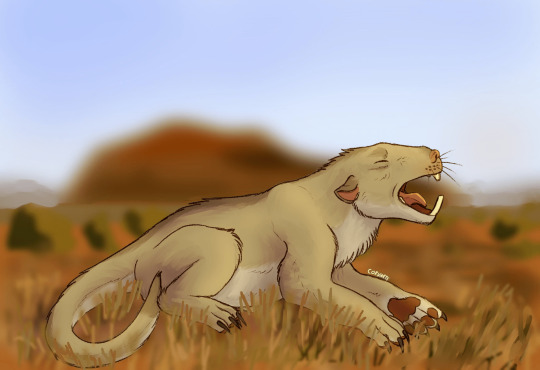
Though also oriented towards carnivory, microcosmodontids are even more omnivorous than eucosmodontids, having a somewhat reduced plagiaulacoid and broader molars. However, they are still mostly tilted towards carnivory and have in fact developed formidable weapons for hunting prey and opening corpses, their “saber toothed” lower incisors. Like with eucosmodontids they succeeded better than ptilodontoideans in times of ecological disaster.

Ilurberrixo gorria from the Paleocene of Portugal, a sheep-sized herbivore, likely a mixed browser/grazer. This exception aside, meniscoessids were rare elements of Cenozoic multituberculate faunas outside of the island continent of Balkanatolia, where they diversified. By corvarts.
Meniscoessids jump straight up into herbivory, their molars broad and efficient for grinding and lacking any meat processing features in their dentition. They do still retain a large plagiaulacoid, a tad odd for herbivorous multituberculate standards, but it was reduced when compared to carnivorous species and likely served to crack open seeds. In this timeline some meniscoessids further reduced the plagiaulacoid, but most retained it, being the main seed eaters in Balkanatolia.
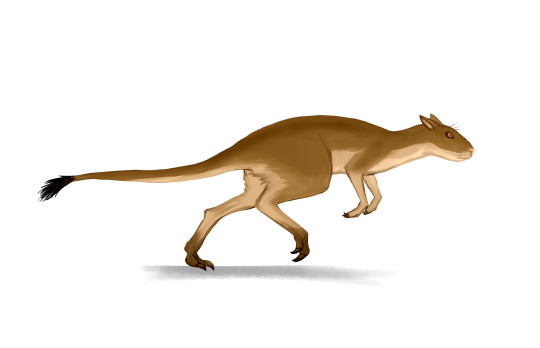
Tauutus peon, a red kangaroo sized herbivore from the African Oligocene. Large boffiids generally fill roles akin to fast running herbivores like antelopes, albeit bipedally. This particular species was a mixed feeder like a camel, bipedal running forms being mostly browsers while hoppers became mostly grazers. By Dave García
The other main lineage of Cenozoic djadochtatheroideans, they are only known from a few teeth in our timeline so their portrayal in this project is a bit speculative. However, they are closely related to herbivorous Cretaceous djadochtatheroideans like Catopsbaatar, so it makes sense to similarly portray them as herbivores. In their better known relatives the plagiaulacoid was strongly reduced and the skull bent downwards like in some ungulates, so in this project boffiids are portrayed with much the same adaptations. Herbivorous habits in part shaped boffiid locomotion: initially hoppers, browsing species were forced to walk short distances while feeding, thus becoming bipedal. By the Late Oligocene they esentially became divided between hopping grazers and running browsers, with a variety of mixed feeders in between. For now they occupy various generalistic herbivore niches, but might eventually expand both towards specialised herbivory and omnivory as the Cenozoic continues…

Of all cimolodonts these are the most adapted towards herbivory. Their plagiaulacoid is vestigial if not lost altogether and they possess massive, brick-like grinding molars. In some species the teeth keep expanding even as the tooth root closes, the closest to the rodent ever-growing condition among unambiguous multituberculates. In lambdopsalids especially the teeth are hypsodont, suggesting a grazing diet. In this timeline taeniolabidoids expanded into all manner of herbivorous niches, though some aquatic species opportunistically take invertebrates like crustaceans and worms. The latter species of Iqiqquq specialised so throughly to a pelagic diet of Azolla mats that they broaded their snout and lost their teeth, replacing them with keratinous pads; similar adaptations to desmostylians and the Steller’s Sea Cow respectively.

True multituberculates or not, they are the allotheres most assuredly adapted towards herbivory. Sudamericids, galulatheriids, greniodontids and adalatheriids all developed hypsodont, ever growing molars and incisors that allow them to feed on tough vegetation, including grass, being among the first mammalian grazers. The plagiaulacoid was lost as a blade but actually reformed into a proper grinding premolar, though in galulatheriids and some greniodontids it instead became a tusk. Ferugliotheriids lack these dental speciations and still retain a plagiaulacoid, but even then these are mostly herbivorous animals that feed on soft vegetation, seeds and tubers. Still, they are more inclined to omnivory than their derived cousins. Notably, some marine galulatheriids have taken to feed on coral, but like in parrotfish their main goal are the algae within coral tissues or scraped from their surface.
#spec evo#speculative zoology#speculative biology#speculative evolution#multituberculate earth#multituberculata#multituberculate#allotheria#allothere#gondwanatheria#gondwanathere
2 notes
·
View notes
Text
Mammal - Information, Scientific Classification, Characteristics, Types and Facts

Mammals are vertebrate animals that belongs to the class Mammalia. They are characterized by several unique functions like presence of milk producing mammary glands for feeding their young ones, fur or hair on their body, and three middle ear bones. Unlike other animal, insect, reptiles and birds, all mammals young one’s drink milk that comes from their mother’s body. This is one of the key ways to identify mammals.
Mammals first appeared on earth, during the Mesozoic Era approximately 200 million years ago. Scientists discovered that Mammalia class includes over 6,400 known species and some of the species are known to be threatened or extinct. Mammals are live in wide range of habitats, from the depths of the oceans to the forests, deserts and the highest peak of the mountains.
Types of mammals
1. Monotremes (Monotremata)
2. Marsupial (Marsupialia)
3. Placental (Placentalia)
For continue reading, CLICK HERE!
0 notes
Note
what separates placentalia from the rest of eutheria?
Obviously the main distinction is giving birth to young at a relatively late stage of development. In fossil mammals this is indicated by the width of the opening in the pelvis (larger young need to pass through it) and by the complete absence of epipubic bones (which would get in the way of an expanding abdomen during extended pregnancy).
There’s also a couple of characteristics of the ankle bones that are unique to placental mammals -- a full mortise and tenon joint and a malleolus at the bottom of the fibula.
15 notes
·
View notes
Text
Scientists just found the earliest evidence of social behaviour in mammals
https://sciencespies.com/nature/scientists-just-found-the-earliest-evidence-of-social-behaviour-in-mammals/
Scientists just found the earliest evidence of social behaviour in mammals
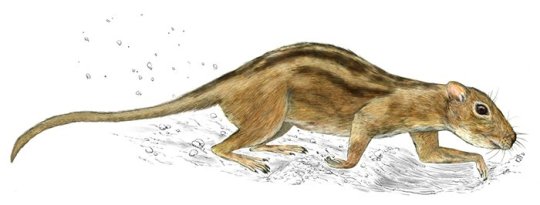
How long have mammals been social creatures? At least since the Late Cretaceous part of the dinosaur age, according to a new study, which puts back the earliest evidence of the behaviour by some 10 million years.
Studying fossils of the small rodent Filikomys primaevus (meaning “youthful, friendly mouse”) dated to around 75.5 million years ago, palaeontologists have discovered evidence of the animals hanging out and living in groups.
We’re not just talking about adults bringing up their young – the site at Egg Mountain in western Montana shows adults and younger animals choosing to burrow and nest together, perhaps some of the first such social activity in history.
“It is really powerful, I think, to see just how deeply rooted social interactions are in mammals,” says palaeontologist Luke Weaver, from the University of Washington.
“Because humans are such social animals, we tend to think that sociality is somehow unique to us, or at least to our close evolutionary relatives, but now we can see that social behaviour goes way further back in the mammalian family tree.”
“Multituberculates are one of the most ancient mammal groups, and they’ve been extinct for 35 million years, yet in the Late Cretaceous they were apparently interacting in groups similar to what you would see in modern-day ground squirrels.”

A lifelike reconstruction of F. primaevus. (Misaki Ouchida)
It had been thought that this kind of deliberate social behaviour developed after the extinction of the dinosaurs 66 million years ago, and primarily in the Placentalia class of mammals that humans belong to.
Not so, according to these fossils – the type of rock they were found in, how well they were preserved, and the traits that F. primaevus share with modern-day burrowing animals all suggest that these ancient creatures were happy chilling out together.
The researchers couldn’t find any evidence of bite marks on the fossils, so it’s unlikely that predators put these animals together, and if they’d been moved by the flow of a river then the fossils wouldn’t be as complete as they are.

A block of fossils analysed from the Egg Mountain. (Luke Weaver)
“These fossils are game changers,” says palaeontologist Gregory Wilson Mantilla. “As palaeontologists working to reconstruct the biology of mammals from this time period, we’re usually stuck staring at individual teeth and maybe a jaw that rolled down a river, but here we have multiple, near complete skulls and skeletons preserved in the exact place where the animals lived.
“We can now credibly look at how mammals really interacted with dinosaurs and other animals that lived at this time.”
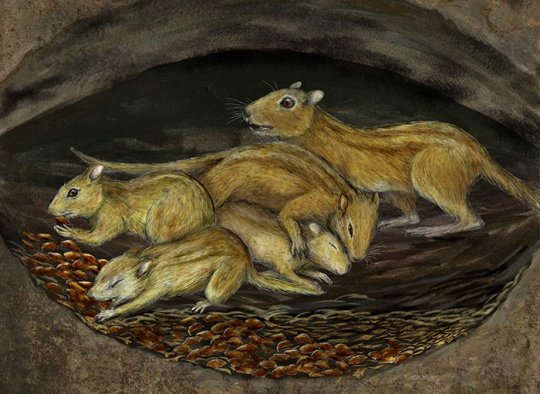
Artistic reconstruction of a social group of F. primaevus in a burrow. (Misaki Ouchida)
Today, around half of Placentalia or placental mammals socialise in this way (global pandemics permitting), and the behaviour is also seen in some marsupials such as kangaroos.
Humans hang out together for all kinds of reasons beyond the business of reproducing and bringing up children, but in evolutionary terms the behaviour can help in avoiding predators, sharing resources, and keeping warm.
Now it seems that behaviour started a lot earlier than we thought. As much of the world continues to grapple with restrictions on meeting up in groups, it’s a reminder that we’re social animals at heart – something the research team is well aware of.
“It was crazy finishing up this paper right as the stay-at-home orders were going into effect – here we all are trying our best to socially distance and isolate, and I’m writing about how mammals were socially interacting way back when dinosaurs were still roaming the Earth!” says Weaver.
The research has been published in Nature Ecology & Evolution.
#Nature
4 notes
·
View notes
Note
Did Halliday et al. include Chester et al.’s new Purgatorius material?
No, no tarsal characters were coded for Purgatorius. But I took the liberty of coding them into the matrix myself. When I ran the analysis unconstrained, Purgatorius ended up as the sister to a Protungulatum+Placentalia clade (not far from the original results).
3 notes
·
View notes
Text

Southern African lion (Panthera leo melanochaita)
Photo by Leon Molenaar
#southern african lion#african lion#lion#panthera leo melanochaita#panthera leo#panthera#pantherinae#felidae#feloidea#feliformia#carnivora#laurasiatheria#placentalia#mammalia#tetrapoda#vertebrata#chordata
180 notes
·
View notes
Note
I know you hate mammal bias. So do I.
But I have a special interest in rabbits.
Could you give me the true classification details (like you did with the "birds are aves" ask) for European rabbit?
Or show me where to look?
Once again, I wouldn't ask, it's just rabbits are my world.
Thanks
Also I used to keep and breed budgies, had two Fischer's lovebirds too (separately as not a pair). Parrots are great!!!!
Hey, mammal bias just means focusing on or highlighting mammals disproportionately - acting like they're all of life, the majority of life, or the most important life forms, etc. Enjoying mammals is a totally normal and expected thing to do, and is totally fine. I personally love cetaceans, marsupials, and bats! A lot! (never going to get over the layers of irony in the Flying Poll Fiasco)
Anyways, here you go!
Biota/Earth-Based Life
Archaeans
Proteoarchaeota
Asgardians
Eukaryomorphans
Eukaryota (note: Proteobacteria were added to an Archaean to form mitochondria and modern day Eukaryotes)
Amorphea
Obazoa
Opisthokonts
Holozoa
Filozoa
Choanozoa
Metazoa (Animals)
Bilateria (all bilateran animals)
a huge mess at the base of animals that we aren't sure of bc apparently deuterostomy isn't monophyletic whoops
Chordata (Chordates)
Olfactores
Vertebrata (Vertebrates)
Gnathostomata (Jawed Vertebrates)
Eugnathostomata
Osteichthyes (Bony Vertebrates)
Sarcopterygii (Lobe-Finned Fish)
Rhipidistia
Tetrapodomorpha
Eotetrapodiformes
Elpistostegalia
Stegocephalia
Tetrapoda (Tetrapods)
Reptiliomorpha
Amniota (animals that lay amniotic eggs or evolved from those that did)
Synapsida (pan-mammalia)
Eupelycosauria
Sphenacodontia
Pantherapsida
Sphenacodontoidea
Therapsida
Theriodontia
Eutheriodontia
Cynodontia
Epicynodontia
Eucynodontia
Probainognathia
Prozostrodontia
Mammaliamorpha
Mammaliaformes
Crown-Mammalia
Theriimorpha
Theriiformes
Trechnotheria
Cladotheria
Prototribosphenida
Zatheria
Tribosphenida
Theria
Eutheria
Placentalia
Boreoeutheria
Euarchontoglires
Gliriformes
Glires
Duplicidentata
Lagomorpha
Leporidae
Oryctolagus
Oryctolagus cuniculus
Because we're going all the way down to a species, it's a bit longer than the list for all birds!
Fun fact, the list for humans is the same through and including Euarchontoglires!
83 notes
·
View notes
Text
Aberrant

Kingdom: Animalia
Phylum: Chordata
Superclass: Tetrapoda
Clade: Reptiliomorpha
Clade: Amniota
Clade: Synapsida
Clade: Mammaliaformes
Class: Mammalia
Subclass: Theria
Clade: Eutheria
Infraclass: Placentalia
Magnorder: Boreoeutheria
Superorder: Euarchontoglires
Grandorder: Euarchonta
Mirorder: Primatomorpha
Order: Primates
Suborder: Haplorhini
Infraorder: Simiiformes
Parvorder: Catarrhini
Superfamily: Hominoidea
Family: Hominidae
Subfamily: Homininae
Tribe: Hominini
Genus: Homo
Species: H. xenos
Common name: Aberrant
Biology/evolution:
Homo xenos, also know as the Aberrant, is a bizarre species found in many parts of Xenogaea. Since there is no ancestral species known from fossil records, with the earliest Aberrant specimen appearing in the fossil record around 30,000 years ago, scientists are unsure of how the creature evolved. Some say that they just highly-derived hominids while others believe that they are mutated humans or perhaps even hybrids between humans and non-human animals. Aberrants are placental, and feed their ifants via the mother's breastmilk. Aberrants live in patriarchal packs, where there is an alpha male. The alpha is easily-distinguished by by his more-prominent and tusk-like fangs, as well as having dark-red, circular markings around his eyes. The alpha gets first picks on everything, from food to mating rights. The alpha is also more-aggressive than his contemporaries, and is highly-territorial when it comes to maintaining his rank. It is not unusual for other males in the pack to be littered with scars from their fights with the alpha.
Description:
Despite being a hominid of close relation to modern humans, it possesses no external ears, lacks any form of body hair, has scaly skin, has eyes on the side of its head rather than at the front, possesses feet more akin to those of non-human primates, possesses long toes, and has back legs somewhat akin to a large cat. It also walks on all fours like other non-human primates. Unlike humans, they cannot speak, and instead communicate in a series of growls, hisses, croaks, barks, and grunts. Their main call is akin to a very-deep bullfrog croak. Their distress call is also eerily similar to human crying. Aberrants possess few teeth, with the only externally-visible ones being their fangs. Aberrants are also deceptively-intelligent, and can learn fast simply by copying things they see humans do. Like humans, they’re sexually-dimorphic: on all fours, males typically stand 3 feet at the shoulder and females around 2.5 feet. On their hind legs, males stand slightly-under 6 feet (due to a slouched posture while standing up) while females stand slightly over 5 feet.
Range and habitat:
Aberrants live across much of Xenogaea, from the mountains all the way down to the desert lowlands. They are quite-hardy animals, being able to survive in extreme conditions that would kill the average human.
Diet:
Aberrants are fairly-opportunistic creatures, and will feed on just about anything that is edible, from carrion to mushrooms. They are even cases where they have been reported to dig up graves to scavenge the corpses inside.
Relationship with humans:
Aberrants have a rather-strained relationship with humans. They are often wrongly-blamed for abducting children and attacking domestic animals, despite Aberrants being a rather-docile species that will, for the most part, leave humans alone so as long humans leave them alone (unless said Aberrant has their young nearby). In Xenogaea, they're referred to in the native language as "Isan-Beba", or "Forest-Baby", due to their distress call sound like human crying. Xenogaean myths also state that the Aberrants were once humans who committed unspeakable sins. And so, the gods cursed them, turning them into monsters. Their scientific name literally means "strange man" in reference to their chimerical appearance.
1 note
·
View note